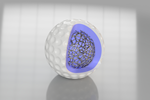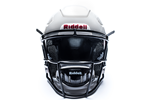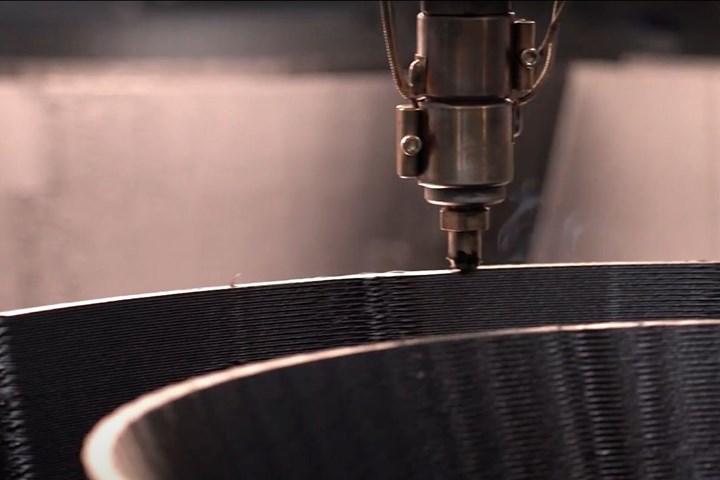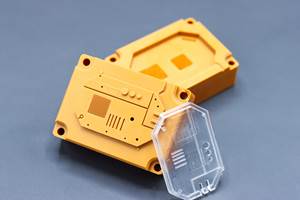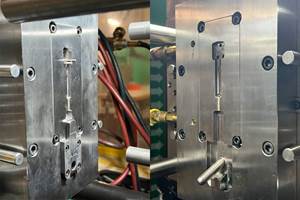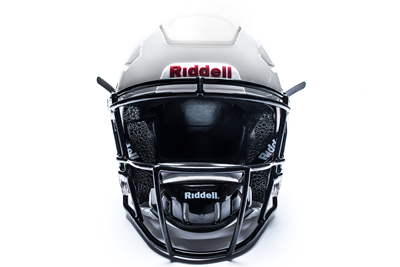Compostable Coffee Pod Maker Uses 3D Printing for Prototypes
The company says 3D printing has helped it to save time and cut back on waste and emissions by prototyping 100% in house.
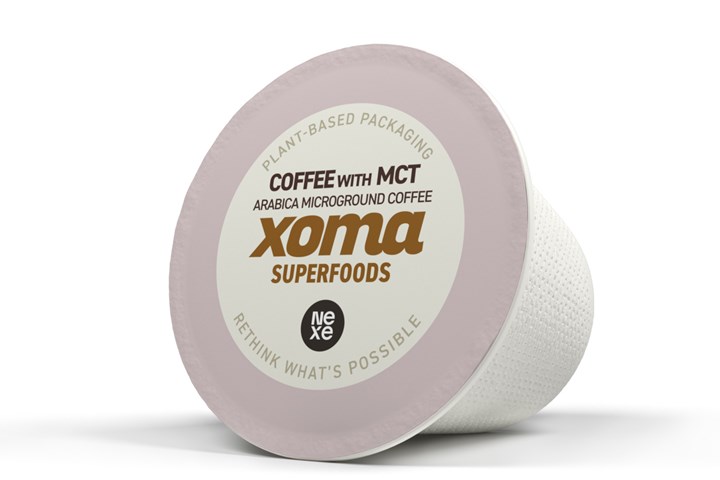
NEXE Innovations prototypes its coffee pods using a 3D-printer.
NEXE Innovations was founded on the idea to create a compostable single-serve coffee pod. The company has launched several coffee products under the brand XOMA Superfoods.
The company prototypes its coffee pods using a 3D-printer. In the below Q&A, Zac Hudson, chief scientific officer for NEXE Innovations, discusses the company’s materials, integrating 3D printing into its supply chain and bringing its manufacturing back to North America in the wake of the pandemic.
Can you give some background on NEXE Innovations (when the company was founded, key product lines, number of employees?)
The company was founded at the end of 2013 as G-Pak Technologies when the founders Darren Footz and Ash Guglani—our CEO and president, respectively—had the idea to create a compostable single-serve pod. Things began to accelerate around 2016 with the build-out of our manufacturing facility and prototyping lab in Surrey, BC. The company changed its name to NEXE Innovations in 2020 ahead of our go-public transaction to reflect our approach to 'Next-Generation Engineering' of consumer products. We've now commercialized a compostable single-serve beverage pod compatible with Keurig K-Cup brewing systems, and are on track to commercialize our second product—a compostable Nespresso-compatible pod—later this year. The company has around 12 employees at the moment but is in a rapid hiring phase as we look to scale up our operations.
How did you all come up with the idea for a zero-waste compostable coffee pod? What are some of the challenges of working with the material?
The idea was originally Darren's. Darren came from the coffee industry as one of the founders of Granville Island Coffee, and he saw the waste associated with single-serve pods as unsustainable. Our pods are made from a combination of polylactic acid (or PLA) and bamboo fiber, as well as other compostable ingredients. The trick was to create a pod that was resistant to heat, composted quickly, and kept the coffee tasting great—all of which were difficult to work out.
When did the company start to use 3D printing to produce the pods?
The company has used 3D printing for prototyping since the beginning. 3D printing is a great way to produce prototypes, as you can make small changes to the form factor of a product without having to manufacture new stainless steel or aluminum molds. We have several kinds of 3D printers in our facility, which mostly use Fused Deposition Modeling approaches. When it comes time to manufacture, we use techniques better suited to high-speed production such as injection molding or thermoforming to create our parts.
I read that the company recently brought its manufacturing back to North America in wake of the pandemic. Can you expand on this? Will the company continue to manufacture in North America in the future?
The pandemic really illustrated the importance of robust supply chains to manufacturers around the world. But more than that, we saw an opportunity to bring manufacturing capacity back to North America because it could reduce supply chain risk while also increasing our operating margins. We'll soon be manufacturing our bioplastic resins in-house alongside bioplastic parts.
Related Content
Make Every Shot Count: Mold Simulation Maximizes Functional Parts From Printed Tooling
If a printed tool only has a finite number of shots in it, why waste any of them on process development?
Read More3D Printing of Injection Molds Flows in a New Direction
Hybrids of additive manufacturing and CNC machining can shorten tooling turnaround times.
Read MoreAdditive Fusion Technology Optimizes Composite Structures for Demanding Applications
9T Labs continues to enhance the efficiency of its technology, which produces composite parts with intentionally oriented fibers.
Read More3D Printed Spine Implants Made From PEEK Now in Production
Medical device manufacturer Curiteva is producing two families of spinal implants using a proprietary process for 3D printing porous polyether ether ketone (PEEK).
Read MoreRead Next
New Technology Combines 3D Printing with Injection Molding
This new concept 3D prints a metallic endoskeleton and then injection molds a special polymer around that skeleton.
Read MoreKey Additive Manufacturing Trends to Watch in 2021
EOS, HP, Carbon and Essentium give a preview of what to expect from additive manufacturing in 2021.
Read MoreMaking the Circular Economy a Reality
Driven by brand owner demands and new worldwide legislation, the entire supply chain is working toward the shift to circularity, with some evidence the circular economy has already begun.
Read More

